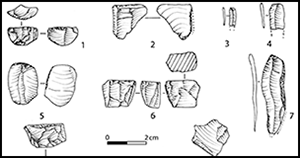No CrossRef data available.
Published online by Cambridge University Press: 08 April 2015

It has long been believed that the earliest ceramics in the central plain of China were produced by the Neolithic cultures of Jiahu 1 and Peiligang. Excavations at Lijiagou in Henan Province, dating to the ninth millennium BC, have, however, revealed evidence for the earlier production of pottery, probably on the eve of millet and wild rice cultivation in northern and southern China respectively. It is assumed that, as in other regions such as south-west Asia and South America, sedentism preceded incipient cultivation. Here evidence is presented that sedentary communities emerged among hunter-gatherer groups who were still producing microblades. Lijiagou demonstrates that the bearers of the microblade industry were producers of pottery, preceding the earliest Neolithic cultures in central China.